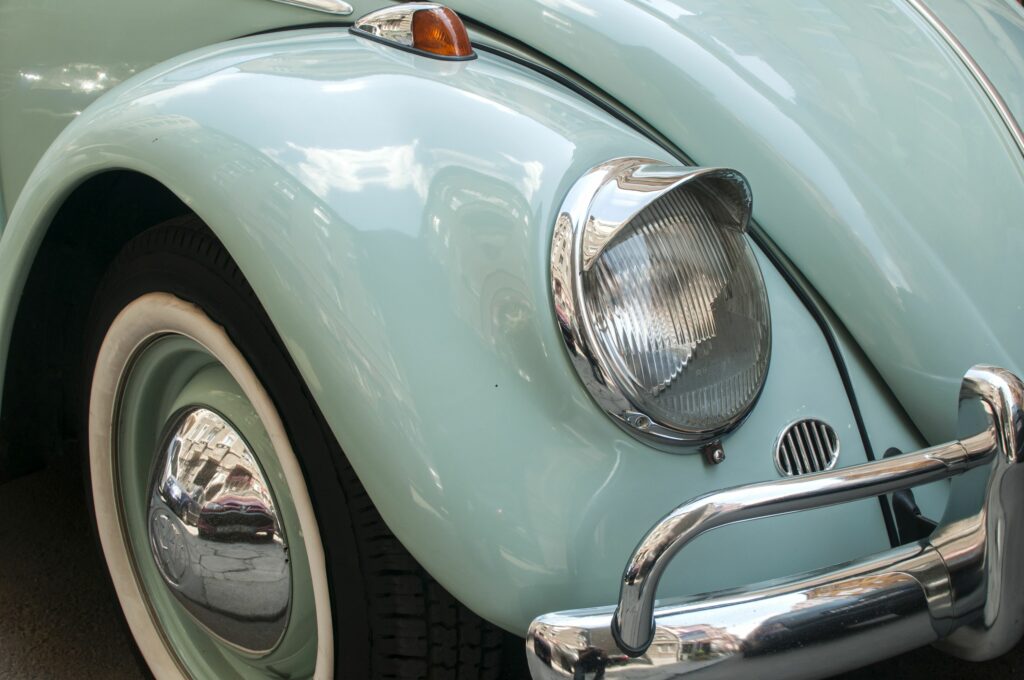 Buying your first car is exciting. It’s a symbol of freedom. It’s a symbol of independence. Most of all, it gives you unprecedented flexibility and is often a prerequisite for entering the job market.
Buying your first car is exciting. It’s a symbol of freedom. It’s a symbol of independence. Most of all, it gives you unprecedented flexibility and is often a prerequisite for entering the job market.
But buying a first car is also usually hard. Not only because it’s expensive. Not only because you’ll need to lower your expectations quite a bit. But also because many sellers and lenders won’t trust you. Sometimes, you will need to do a lot of searching before you can finally find someone who will make you an acceptable offer.
Thankfully, you can make things a whole lot easier for yourself.
Simply opt for a used model for your first car. There are many reasons why a second hand vehicle is best. And not all of them have to do with price.
In this article, we’ll give you some concrete buying advice.
Don’t skip this part!
If you play it smart, then your first car will be something you’ll lack back on fondly.
And if you’re looking for hands-on help, give us a call. At iFinance, we’ll gladly take a look at your application even if you don’t have a real credit score yet.
Just give us a call at 0141 848 7733
.
Ready to go?
Then it’s time to talk to us about car finance. At iFinance, we know all about the problems that first time drivers face. For us, a perfect credit score or a big deposit are by no means requirements to find a suitable car.
Instead, what matters is whether you can realistically pay off the loan. To assess this, give us a call at 0141 848 7733 and we’ll go through a few simple questions with you. If we can offer you finance, then you can drop by our showroom in Paisley near Glasgow and select a car that fits your budget and needs.
If you remember to take your passport and driving license, you could be enjoying that freedom and independence on the very same day!
First car: Everything is more expensive
Let’s get the bad news out of the way first: Whatever you do, however well you plan and approach things – your first car is always going to be expensive.
For starters, you don’t have as much money yet. So even if you can get a really, really great deal, it would still feel expensive to you. Sometimes, you won’t even have a permanent job yet. So you’ll either have to tap into your savings or rely on friends and family to help you.
Even more importantly, the car and everything connected to it will not just feel, but actually be more expensive. This is because you
a) don’t have any driving experience yet. So insurance companies will ask for higher premiums to make up for the higher risk.
b) don’t usually have a comprehensive credit score yet. So lenders will demand a higher interest rate to compensate for the higher risk associated with that.
Whether or not this is fair or justified is another question. The fact is that things have always been like this. So you need to find ways to deal with them.

Save money by going used
It is easy to see why buying a used vehicle is an effective way out of this conundrum: it is considerably cheaper. Cars loose a lot of value over their first year and continue to depreciate drastically over the next two. So you could buy a three year old car, which will feel almost as good as new, at a much reduced price.
But there’s more.
a) The insurance premium for a used car is typically lower. The reason for this is that the replacement and repair costs are far lower in case of an accident or theft. (Also, a used car is less likely to get stolen.)
b) Financing costs for a used car are typically lower and not just because of the lower price. Here, too, the risk for the lender is lower if you default on the loan.
On top of that, the second hand car market offers better choice than the new one. You can’t customise a used car like a new car. But there are more models at your disposition and from different model generations. Plus, you can often get pricey extras at almost no additional cost.
The only thing you won’t get is that new smell in the passenger cabin. Although there are now sprays for that, too.
Your first car: The CSS approach
We’ll be honest: Just about everyone prefers a factory-new car. There’s just something to putting the keys into a car that’s never (properly) been driven before. That feeling of building a deep bond with a car, almost like the beginning of a friendship.
Still, when it comes to your first car, other factors should be more important than that.
At iFinance, we believe in the CSS criteria. These three qualities are the ones you should focus on:
- Your first car should be cheap. This is not to say that you should buy the most inexpensive model you can find. But you should definitely try to keep the price down as much as possible.
- The car should be safe. Especially if you’re opting for a considerably older car, say something around the ten year mark, that vehicle should have had a perfect EuroNCAP score at the time it was introduced to the market.
- Your first car should be small. Probably, this is what you’ll be looking for anyway. But it’s worth repeating: A small car is easier to drive, easier to park, cheaper to maintain and cheaper to buy. It’s also easier to love, if that’s something you care about.
What about new safety technology?
One development on the car market over the past decade has been the increasing relevance of and progress in safety technology. Cars are starting to look more and more alike and even smaller manufacturers have made huge strides in terms of build quality. Safety is therefore one of the last areas where premium brands can set themselves apart from the fold.
So, how much better has safety become? Plain and simple: The improvements have been huge. In terms of digital technology, many innovations are significantly reducing the risk of collisions. These include Electronic Stability control, automatic and emergency braking, blind spot monitoring, lane departure warnings, speed monitoring and warning systems as well as parking assistants.
But it’s not just digital technology that has progressed.
New materials and smarter car designs are reducing physical harm for drivers, passengers and pedestrians/cyclers involved in a crash.
A used car may seem like a compromise. But bear in mind that even a ten year old car can still very much be pretty safe.
Not all technology is instantly made redundant by novel developments. Just make sure the model you choose is as good as it can possibly be. And remember the most important safety feature of all: Alert driving.

What to look for in a used car?
We mentioned the CSS approach. Let’s now get into a little more detail on what you should be looking for. Here are some of the technical qualities your first car should ideally possess according to car magazine Auto Express:
- Light steering,
- good visibility,
- a responsive engine and responsive brakes,
- user-friendly controls,
- and a positive gear shift.
All of these relate to how well a car drives. Which explains why models like the Ford Fiesta or the Volkswagen Polo continually rank high on these charts: They are not just very practical, high quality cars. They are also great to drive, especially for beginners.
On the other hand, personal preferences play a vital role.
You need to feel comfortable in your car, regardless of how it may feel to others. Take the Fiesta and the Polo: While the former offers an engaging, fun performance, the latter offers the calm and complete control of a far bigger car.
Both are perfectly valid experiences. What matters is which one you feel safest and best with.
What are some of the best first cars?
Taking what we just said into account, Auto Express arrive at the following top 10:
- Volkswagen up!/Skoda Citigo/SEAT Mii
- Kia Picanto
- Ford Fiesta
- SEAT Ibiza
- Hyundai i10
- Volkswagen Polo
- Toyota Aygo/Peugeot 108/Citroen C1
- Skoda Fabia
- Dacia Sandero
- Vauxhall Corsa
Here are a few more recommendations by various publications from around the web:
- Honda Civic: Business Insider laudes it for being ‘bulletproof’ and for being cheap to repair. Also, it can easily be customised, which is obviously a great quality if you’re buying used.
- Car Bibles praises the Subaru Impreza for its functionality and fuel efficiency. It is also a car that feels like an SUV despite not, strictly speaking, being one.
- Hyundai Elantra: Hyundai is an obvious candidate for a beginners’ car, just like Dacia, simply because of the pricing of their vehicles. But even though the Elantra is not expensive, it certainly does not feel cheap. Its strengths include a spacious passenger cabin and great fuel efficiency.
Another interesting fact: The Ford Fiesta’s MyKey system allows parents to control how their children drive the car. Certainly a feature to think about for first time drivers.

Some tips on finance
As we mentioned, costs will always be an issue for first-time car buyers. That’s not to say, however, that you can’t make some improvements.
To help you save some money, we’ve compiled a few of the best car finance tipps:
First car finance tip #1: Set a budget
Extremely obvious, which may be why so many buyers forget about it. Before even setting foot in a showroom, you should know exactly how much you can spend.
Trusted Choice has squeezed this wisdom into an easy to remember formula:
Set a Budget, Pick a Car – In That Order.
Another important thing to remember is that the purchasing price is actually just one cost among many. So if you’re deciding on a budget, make sure to include the following as well:
- Car insurance
- Road tax
- MOT test
- Tyres
- Fuel
First car finance tip #2: Buy from a dealer
With a used car, there are two main options: Buying from a private person or from a dealer. (Of course, you can also buy at an auction house, but that’s certainly not something we’d recommend for first time buyers.)
It goes without saying that you can get somewhat better prices for used cars on the private market. This is because there is no middle man here.
However, buying from a private seller has its downsides:
- It’s usually buyer beware. Which means that there are no guarantees or typical methods of recourse should something be wrong with the car after all.
- You can usually check and test drive the car. Still, the risk of buying a lemon is significantly higher than with a dealer.
- You will still need to set up car finance for the car. Which may be something a dealer can do better than you.
Dealers have stepped up to the challenges facing the industry considerably. They have also become a lot better in terms of offering highly competitive loans. For your first car, they should be your main point of contact.
First car finance tip #3: Make a deposit
If you can make a deposit, you should. The simple reason is that car finance with even a small upfront payment is a lot cheaper than car finance without one.
By paying a deposit, you reduce the risk for the lender and you also shave a bit off the purchase price, which is the base for calculating your interest rate. So the loan as a whole becomes a lot less expensive.
You will also be able to pay off the loan in full a lot faster.
If, however, you’re experiencing financial trouble, it is probably best to avoid laying down a deposit. Yes, you will pay a bit more. But on the plus side, you’ll have more reserves to fall back on in case something goes wrong.
At iFinance, we discuss this with our customers on a case by case basis. Unlike other dealers, we do not insist on a deposit, but consider it an option.
First car finance tip #4: Don’t think too big
When looking for a car, your enthusiasm is bound to be huge. But your means are tiny. This is a perfect recipe for disappointment. Don’t let that prospect lure you into biting off more than you can chew.
Opting for a used car is one step in the right direction. Choosing the best car for your needs rather than the car of your dreams is the next one.
It is helpful to realise two things:
- When you’re only just beginning to drive, you don’t know yet what you really need and enjoy. So it makes sense to buy a cheap, stripped down car first and to upgrade later.
- Buying cheap allows you to pay off the loan faster and switch to a different, more exciting car sooner. Buying new and/or expensive will most likely lock you into a contract for longer and thus lead to more problems later on.
As you gather experience and build up a credit score, future car finance is potentially going to be cheaper, allowing you to buy more expensive models by better brands.
First car finance tip #5: Go for telematics insurance
Car insurance is going to be one of the biggest costs if you’re a new driver. If you want to cut costs and are okay with a certain level of control, telematics car insurance is a great way to save money.
Essentially, what this comes down to is installing a black box in your car which monitors and tracks your routes. It can thus determine whether you’ve been a careful or carefree driver, which translates to a low risk or high risk.
These boxes can also shut off the car at specific times of the day. One way of significantly reducing the danger of a crash is to only allow use of the car during daylight hours. By far the most accidents occur in the night and thus restricting this can make your policy a lot cheaper.
